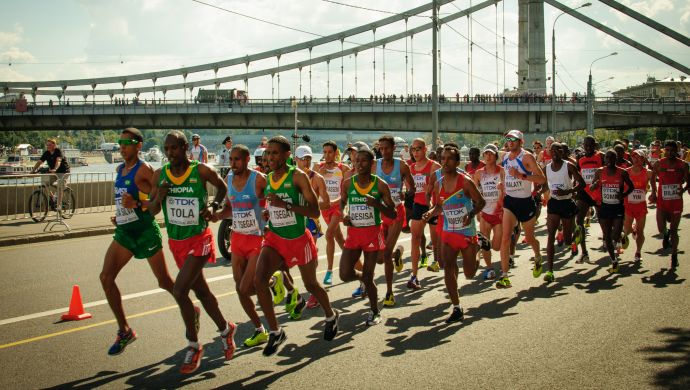
These are unprecedented times – you have seen this on almost every industry bulletin paper and internal memo. Indeed, this pandemic has upended the lives and livelihoods of many. It has even shuttered companies we thought were mainstays in our economy.
A year on and industry leaders are still asking: how long till things go back to business (and bottom-line) as usual?
We do not yet know the answer and it could be years before we see a return to normal, if ever. Without a finish line in sight, companies are running in short, even dramatic, sprints to sidestep business hurdles as they come.
The more uncertain the situation, the more drastic the company’s actions are – sustained over a course of time, this knee-jerk ‘intensity’ can lead to poor business outcomes. However, building consistency around your organisation can see you through the recession and into recovery.
As Ted Talk sensation Simon Sinek says: While intensity is good for quick results, working consistently yields long-term results. And a good balance of both will set you up for greater success.
Intensity: To sprint or not to sprint?
Running a business is challenging under the best of circumstances. When faced with a crisis of uncertainty, it gets much harder. It is a widely held assumption that the only way to counteract a slump is by taking the ‘intensity’ approach. It is an unspoken axiom in business, but power move it is not. It refers to any type of corporate action that involves concentrated effort over a short period of time, much like sprints.
At the first sign of cashflow trouble on the 60th-floor boardroom, the CEO puts into effect a string of undertakings: Below-cost pricing, retrenchment, branch closures and organisational restructure. The law is laid down faster than you can say ‘new normal’. The emphasis is often on the fiscal outcome of the decision and less on the impact it has on others.
Also Read: Road from crisis to recovery: What is fuelling the resurgence of startups post-COVID-19
Though excessively dire, the short-term gains are looked upon as somehow superior. Why? Intensity is measurable, controllable, and there is a sense of relief in having come to a resolution.
Besides, it sounds good on paper. Under financial duress, these measures can be a positive course of action. But it is a short-term path with poor long-term results including weak employee relations and bad customer experiences, by extension.
Consistency: Business is like a marathon
The consistency approach is not that much different from a marathon. You put one foot in front of the other, keep a constant pace, take controlled breaths, and finish strong. Consistency means replicating positive behaviour day after day till you see desired results. Picture the CEO again, now think consistency.
Did you envision a tedious pattern of a usual day’s work: meetings, conference calls and endless emails? Right, you are. Contrary to what you may believe, it is the daily grind we are all too familiar with that will have the largest payoffs.
Granted, it will not make headlines but in totality, these actions account for much of a company’s success. Instead of whittling down your headcount, consider work reassignments in their place.
Instead of retaliatory discounts, consider value-adding to keep customers buying. It is far from instantaneous and takes a lot more effort than reflexive first measures, but you will see the outcomes you want.
The long and short of it
Now that you have weighed the merits of both approaches, here is the takeaway: It is not always black and white. From multinational corporations to small and medium-sized businesses, enterprises can benefit from the greys. After all, most companies are already forward-thinking but under pressure to see immediate results.
Also Read: Future of workspaces: What will the post-pandemic office look like?
One sustainable way to bridge this gap is to balance intensity and consistency, the long and short term. This means utilising intensity spikes at intervals and integrating corporate strategies for the long-haul. But to truly ensure these methods coalesce, you need compassion. As leaders we have a responsibility to balance costs and care. Take it from us at The Little Black Book, surviving this economic fallout does not have to lead to layoffs or paycuts.
In our case, a hiring freeze was instituted at the onset, notwithstanding the plans we had for company expansion, and we took stock of our resources and reserves. What we did not immediately need, we let go. Unnecessary subscriptions? Out. Subcontracted crew? Out. Non-essential benefits? Out. Even though the initial decision to downsize our workspace was met with a collective gasp, it meant that we were able to keep staff on payroll. All while leveraging on government-driven financial aid, employee attrition and staff reassignments.
On the consistency-front, we have worked day-in day-out to grow our sphere of contacts, reconnect with leads and diversify income streams. In the grand scheme of things, we have fared reasonably well.
Instead of holding cards tight to our chests, good leaders acknowledge when a situation is bad, and that it may get worse before it gets better. By acting decisively in the absence of certainty, for the long and short term, your company will stand a greater chance of seeing itself through to precedented times.
–
Editor’s note: e27 aims to foster thought leadership by publishing contributions from the community. This season we are seeking op-eds, analysis and articles on food tech and sustainability. Share your opinion and earn a byline by submitting a post.
Join our e27 Telegram group, FB community or like the e27 Facebook page
Image Credit: Dmitry Gladkikh on Unsplash
The post Sprint or marathon? How to determine the balance in consistency vs intensity during COVID-19 appeared first on e27.

